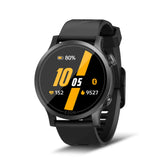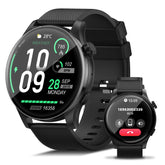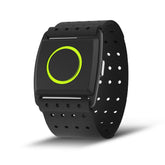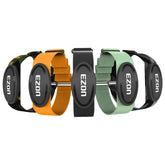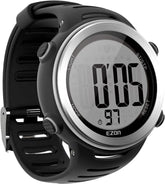The Significance of Blood Oxygen Monitoring in Fitness
In the pursuit of optimal fitness and health, understanding various physiological metrics is essential. One such metric that has gained significant attention is blood oxygen saturation (SpO2) levels. Monitoring your blood oxygen levels during physical activities can provide valuable insights into your cardiovascular health, endurance, and overall performance. This guide will explore the importance of blood oxygen monitoring, what constitutes normal levels, and how deviations can impact your health and fitness. We will also highlight tools such as blood oxygen monitor watches, fitness tracker watches, and healthy smart watches that can help you keep track of this vital metric.
What is Blood Oxygen Saturation?
Blood oxygen saturation refers to the percentage of hemoglobin in the blood that is saturated with oxygen. It is a critical indicator of how effectively oxygen is being delivered to your body’s tissues, which is essential for maintaining energy levels, stamina, and overall health.
- Normal SpO2 Levels: A normal blood oxygen saturation level typically ranges from 95% to 100%. Levels below 90% may indicate a need for medical evaluation, especially during physical exertion.
Why is Blood Oxygen Monitoring Important?
1. Enhancing Athletic Performance
Monitoring your blood oxygen levels can help you understand your body’s ability to utilize oxygen during exercise, which is crucial for performance:
- Endurance Training: Athletes, especially those involved in endurance sports like running, cycling, or swimming, can benefit from knowing their SpO2 levels. Adequate oxygen delivery is vital for sustaining long-duration activities and improving stamina.
- Pacing Strategies: By tracking blood oxygen levels, athletes can better manage their pacing, ensuring they remain within optimal ranges to avoid fatigue.
2. Identifying Health Issues
Blood oxygen monitoring can serve as an early warning system for potential health problems:
- Respiratory Concerns: Low oxygen saturation can indicate respiratory issues, such as asthma, COPD (chronic obstructive pulmonary disease), or other lung conditions, which may require medical attention.
- Cardiovascular Health: Abnormal SpO2 levels can also reflect cardiovascular problems, signaling that the heart may not be pumping effectively.
3. Adapting to Environmental Changes
For those who engage in outdoor activities at high altitudes, monitoring blood oxygen levels becomes even more critical:
- Altitude Adaptation: At higher elevations, oxygen levels decrease, making it essential to monitor SpO2 to prevent altitude sickness. Staying aware of your blood oxygen levels can help you acclimatize and adjust your activity levels accordingly.
Tools for Monitoring Blood Oxygen Levels
1. Blood Oxygen Monitor Watch
A blood oxygen monitor watch is equipped with sensors that measure your SpO2 levels non-invasively. These watches provide real-time data and can alert you to any significant changes in your oxygen saturation. Look for models that also offer other health metrics, such as heart rate and sleep tracking, for a comprehensive view of your health.
2. Fitness Tracker Watch
Many fitness tracker watches now come with built-in blood oxygen monitoring features. These devices not only track your physical activity but also provide insights into your overall health, allowing you to monitor your SpO2 levels during workouts and recovery.
3. Healthy Smart Watch
A healthy smart watch typically combines fitness tracking with advanced health monitoring features, including blood oxygen monitoring. These smart devices can sync with your mobile apps to help you analyze trends and make informed decisions about your fitness and health routines.
Conclusion
Blood oxygen monitoring is an essential aspect of fitness that can enhance performance, identify potential health issues, and help you adapt to environmental changes. Understanding your blood oxygen saturation levels allows you to optimize your workouts, manage your health proactively, and enjoy your fitness journey to the fullest. Utilizing tools like a blood oxygen monitor watches, fitness tracker watches, and healthy smart watches can empower you to stay informed about your body’s needs and make data-driven decisions for your health and fitness goals. Embrace the significance of blood oxygen monitoring and take control of your fitness journey today!
